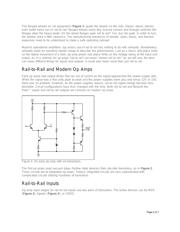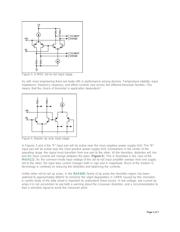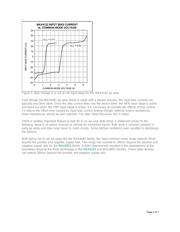herunterladen

Maxim > Design Support > Technical Documents > Application Notes > Amplifier and Comparator Circuits > APP 4428
Keywords: rail to rail, op amps, input, output, signal swings, beyond the rails, MOS, bi-polar, CMOS, P
input pair, N common-mode, supply bias, current changes, sign magnitude, crossover, distortion, NPN,
PNP, impedance, match phase, reversal, latch up, overdrive
APPLICATION NOTE 4428
Rail-to-Rail: Railroading and the Electronics of Op
Amps
By: Bill Laumeister, Strategic Applications Engineer
Sep 28, 2009
Abstract: Railroads have had rail-to-rail components for years that were, in fact, nearly rail to rail. Op
amps employ the same nearly rail-to-rail tradition. This application note discusses rail-to-rail op amps,
and explains why some inputs and outputs can be less than, nearly, or slightly more than the power rails.
Introduction
For some, rail travel conjures up nostalgic images. They look at an old train engine and it represents a
time and lifestyle from a bygone era. It suggests a simpler, slower time. That image is nothing like
today's commute or even air travel. Most business trips today are done on the run. Sadly, waiting in
airport security lines is about the only time that we are not racing around.
Figure 1. Railroad use of "rail-to-rail" flanged wheels.
Page 1 of 7








